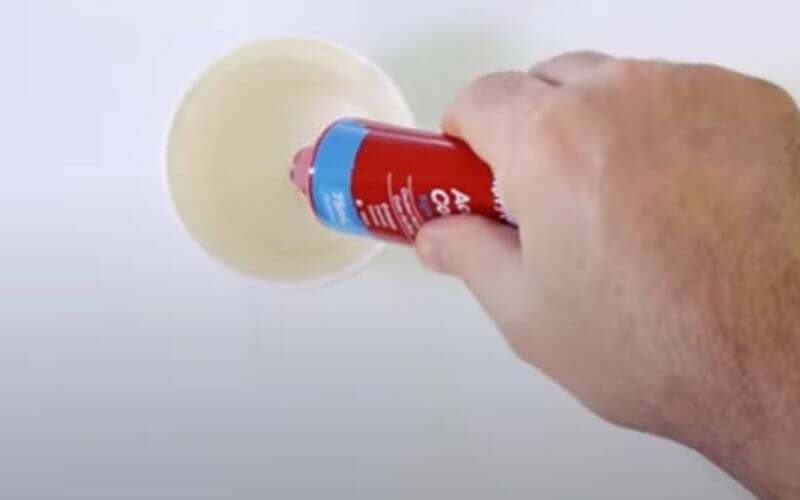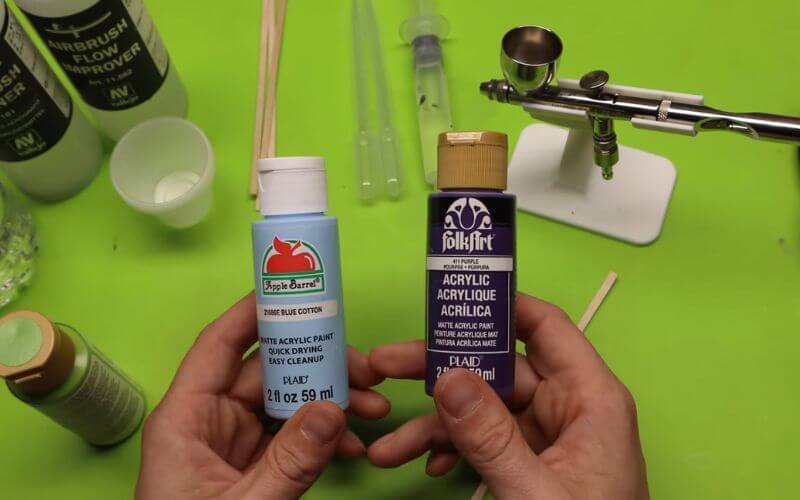How To Thin Acrylic Paint: A Comprehensive Guide

Are you new to acrylic painting and wondering how to thin your paint? Or have you been painting for a while but still need help getting the right consistency? Whatever the case, thinning acrylic paint is essential to your painting toolkit.
In this blog post, we'll go over the step-by-step process of how to thin acrylic paint and give you some tips on how to do it easily and effectively.
Why Thinning Acrylic Paint is Important
If you've ever painted with acrylics, you might have noticed that sometimes the paint doesn't go on smoothly or doesn't cover the canvas evenly. That's where thinning acrylic paint comes in handy! Adding a little water, acrylic medium, or thinner to your paint can make it more fluid and easier to spread.
Water is a popular choice since it's easy to find and cost-effective. But keep in mind that water can dilute acrylic paint intensity and adhesion. Some artists prefer using acrylic medium or paint thinners, specially designed to thin acrylic paints while preserving their color and adhesion.
How to Thin Acrylic Paint With Water
Step 1: Gather Your Materials

To thin acrylic paint, you'll need a few things:
- Acrylic paint
- Water
- Paint palette or container
- Paintbrush
- Stirring stick or palette knife
Step 2: Start with a Small Amount of Water

It's important to start with a small amount of water and gradually add more as needed. If you add too much water at once, you may end up with too thin and difficult to work with paint. Start with a ratio of about 1:10, meaning one part water to ten parts paint.
Step 3: Mix the Water and Paint

Use your stirring stick or palette knife to mix the water and paint. Be sure to mix thoroughly to ensure that the water is evenly distributed throughout the paint. If you're using a paint palette, you can combine the paint and water directly on the palette. Transfer the paint to the container before mixing if you're using a container.
Step 4: Test the Consistency

Once you've mixed the paint and water, it's time to test the consistency. Dip your paintbrush into the thinned paint and apply it to scrap paper or canvas. The paint should flow smoothly and evenly off the brush without leaving any clumps or streaks. If the paint is too thin, add a bit more paint. If it's too thick, add a bit more water.
Step 5: Continue to Adjust

As you paint, you may find that the consistency of your thinned paint changes. This can happen as the paint dries on your palette or as you add more layers to your painting. If you find that your paint is becoming too thick, add a bit more water. If it's becoming too thin, add a bit more paint.
If you want to see how it is done in action, check out the video below:
How to Thin Acrylic Paint With Glue and Water
Do you know that you can also use glue to thin acrylic paint? Yes, you heard it right! Thinning with glue and water is done, especially for pouring paint. This makes the acrylic paint more fluid and easier to manipulate for various pouring techniques such as swipe, flip cup, or puddle pour. Let's see how the thinking with glue and water is done. Here is the step-by-step guide.
Materials Needed:
- Acrylic paint
- White glue (PVA glue)
- Water
- Mixing container
- Stirring tool (such as a palette knife or wooden stick)
- Measuring tool (optional)
Step 1: Prepare Your Work Area

Choose a well-ventilated area and lay a protective covering on your work surface to prevent spills or splatters. Wear protective gear such as gloves, a smock, or an apron to avoid getting paint on your clothes.
Step 2: Add Your Acrylic Paint

Next, add your acrylic paint to the glue solution. Begin by adding a small amount of paint and stirring it into the glue mixture. Gradually add more paint until you reach your desired color and consistency. Remember that the more paint you add, the thicker the mixture will become.
Step 3: Mix Your Glue Solution

Start by mixing white glue (PVA glue) with water. The glue-to-water ratio will depend on your paint's desired consistency. A general guideline is to mix one part glue to one part water for a thin consistency or two parts glue to one part water for a thicker consistency. You can also use a measuring tool to achieve accurate ratios.
Step 4: Mix Your Paint

Mix the paint and glue solution thoroughly using a stirring tool (such as a palette knife or wooden stick). Stir until the mixture is smooth and there are no lumps or clumps.
Step 5: Check Consistency and Adjust as Needed

Check the consistency of your paint by dipping your brush into the mixture and testing it on a scrap piece of paper or canvas. If the paint is too thick, add more water to the mixture. If it is too thin, add more paint or glue until you achieve your desired consistency.
How to Thin Acrylic Paint for Airbrush
Now, let us discuss how to thin acrylic paint for airbrush painting. Many people prefer this method as it produces a more even and professional finish to their artwork. So, let's get started with our step-by-step guide!
Materials:
- Acrylic paint
- Airbrush thinner or water
- Mixing container
- Stirring tool (such as a palette knife or wooden stick)
- Measuring tool (optional)
Step 1: Prepare Your Work Area

Choosing a well-ventilated area and laying a protective covering on your work surface to avoid spills or splatters is essential. Wear protective gear like gloves and a mask to avoid inhaling paint fumes.
Step 2: Choose Your Thinning Medium

For airbrush painting, you'll need to thin your acrylic paint using either an airbrush thinner or water. Some airbrush artists prefer to use a thinner, specifically designed to thin acrylic paint while maintaining its consistency and pigmentation. However, if you don't have an airbrush paint thinner on hand, you can also use water as an alternative.
Step 3: Prepare Your Acrylic Paint

Now, pour your acrylic paint into the mixing container. Begin by adding a small amount of paint. You can add more paint until you reach your desired color and consistency. Keep in mind that the more paint you add, the thicker the mixture will become.
Step 4: Add Your Thinning Medium

Start by pouring a small amount of your chosen medium into a mixing container with acrylic paint. If you're using an airbrush paint thinner, follow the instructions on the label to achieve the correct ratio. If you're using water, a good starting point is a 1:1 ratio of water to paint.
Step 5: Mix Your Paint

Mix the paint and medium thoroughly using a stirring tool (such as a palette knife or wooden stick). Stir until the mixture is smooth and there are no lumps or clumps.
Step 6: Test Your Mixture

Before you start painting:
- Test your mixture by spraying it onto a test surface like scrap paper or cardboard. If the mixture is too thick, add more medium.
- If it's too thin, add more paint.
- Adjust the consistency until you achieve a fine mist that's easy to control.
If you have a hard time following written instructions, you may check out the video below:
Tips for Thinning Acrylic Paint
Now that you know the basic process for thinning acrylic paint, here are some tips to help you do it easily and effectively:
- Use distilled water. Tap water can contain impurities that may affect the quality of your paint.
- Use a spray bottle to add water. This can help you easily control the amount of water you're adding.
- Use a palette knife to mix your paint. This can help you mix your paint more thoroughly than a paintbrush.
- Use a hairdryer to speed up drying time. Thinned paint can take longer to dry than regular acrylic paint, so using a hairdryer can help speed up the process.
- Experiment with different ratios. The 1:10 ratio is a good place to start, but you may prefer a different ratio for your particular painting style or technique.
Thinning Acrylic Paint FAQ
How much media should I use to thin acrylic paint?
The amount of medium you should use to thin acrylic paint depends on the consistency you're trying to achieve. A good starting point is a 1:1 ratio of acrylic mediums to paint.
Can I mix different brands of acrylic paint with different mediums?
It's best to stick to the same brand of acrylic paint and medium for optimal results. Mixing different brands of acrylic paints and mediums can result in uneven color and texture.
What is the best medium to thin acrylic paint for airbrushing?
Airbrush thinner is the best medium to thin acrylic paint for airbrushing paints. It's specifically designed to thin acrylic paint while maintaining consistency and pigmentation.
Conclusion
Thinning acrylic paints is a crucial skill to have for any painter, whether you're a beginner or a seasoned pro. By following the steps outlined in this blog post and using the tips we've provided, you'll be well on your way to achieving the perfect consistency for your painting needs. Feel free to experiment with different ratios and techniques to find what works best for you.
So, what method worked for you? We like to hear your thoughts in the comment section below!
